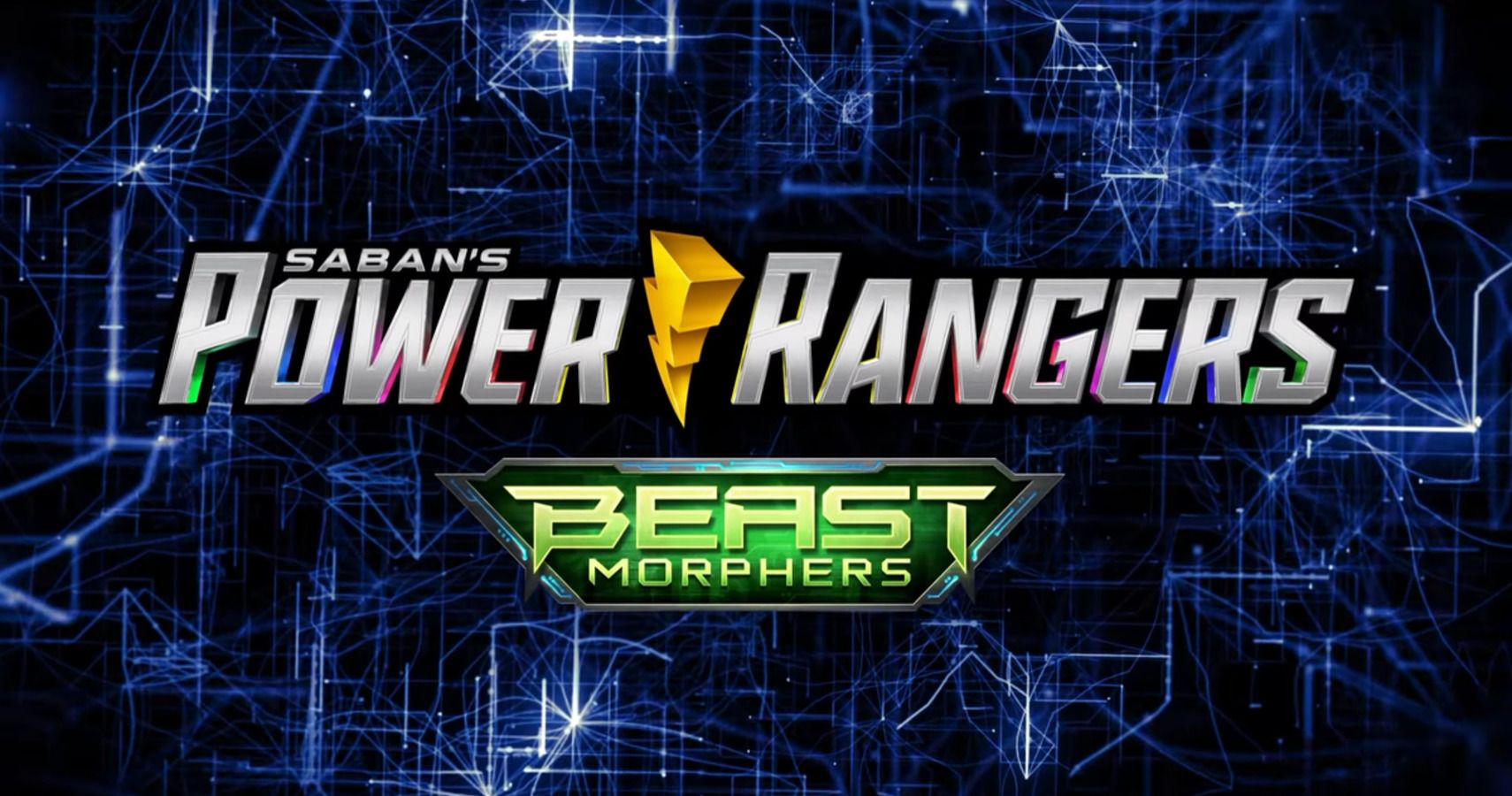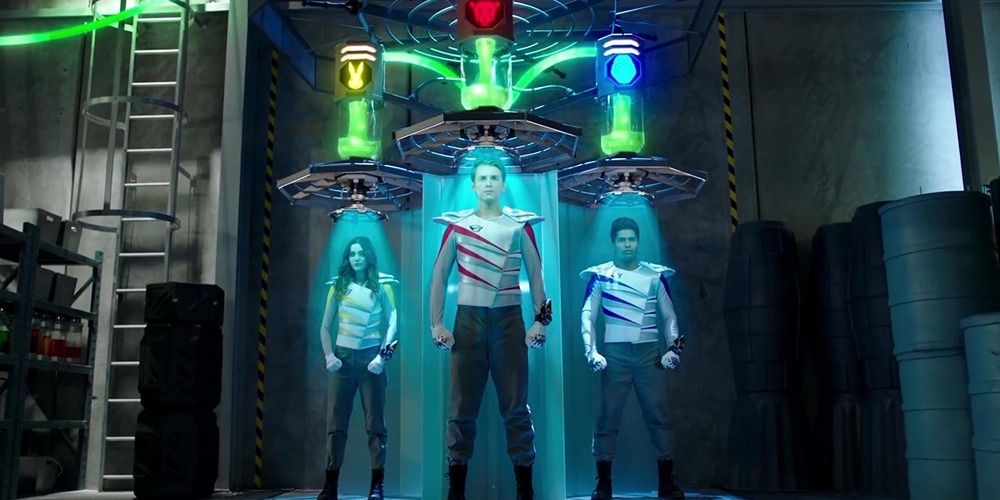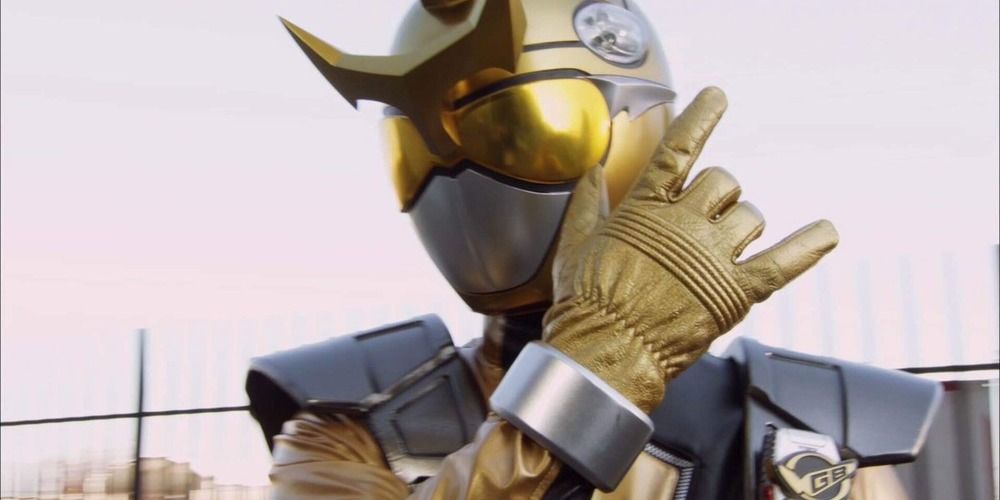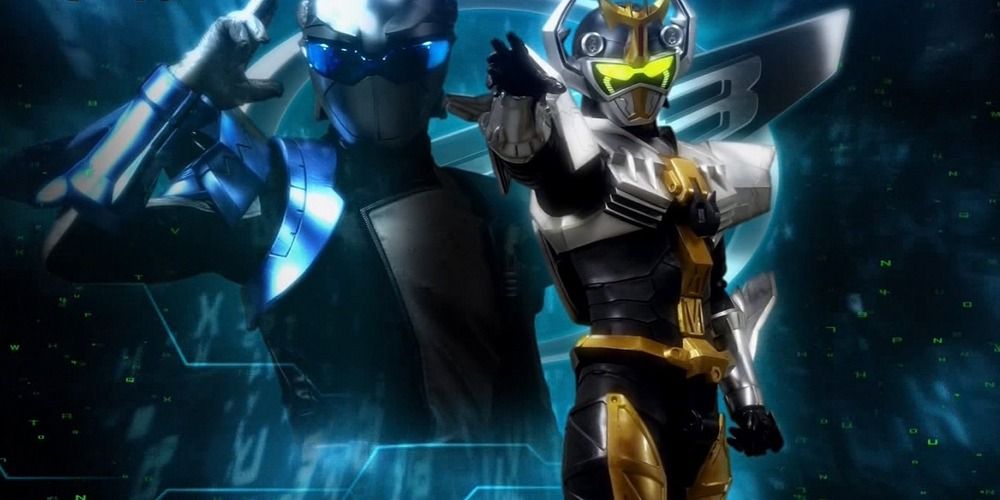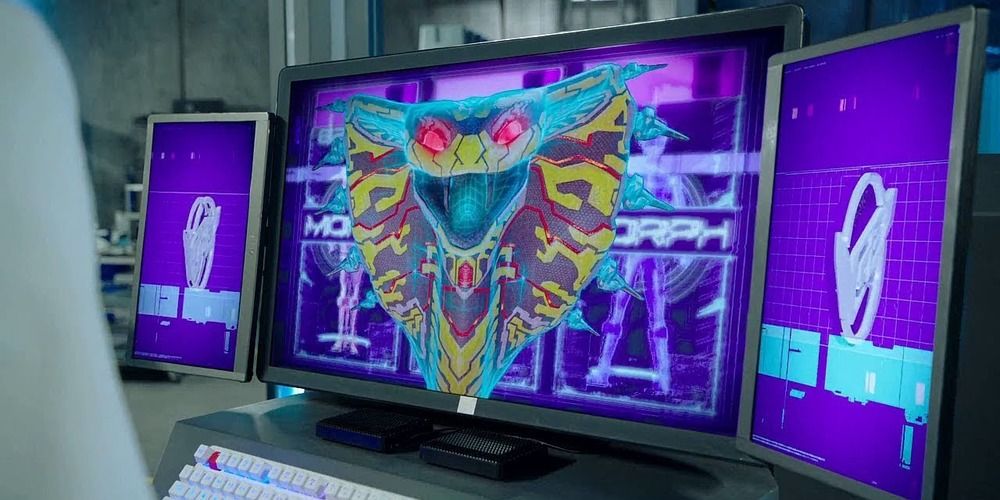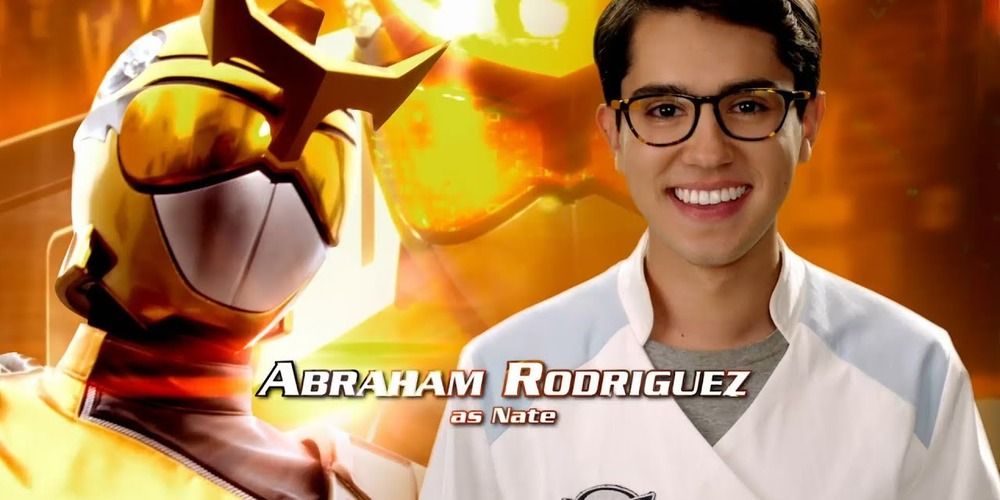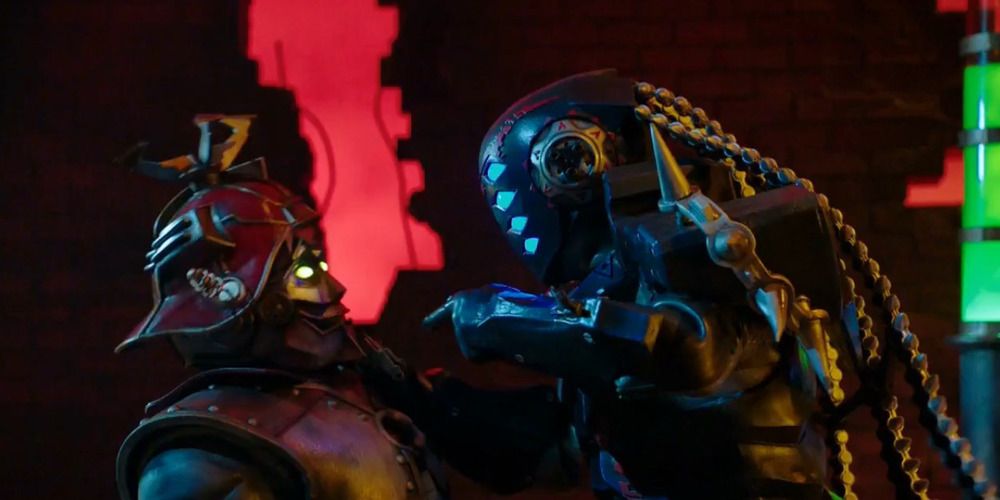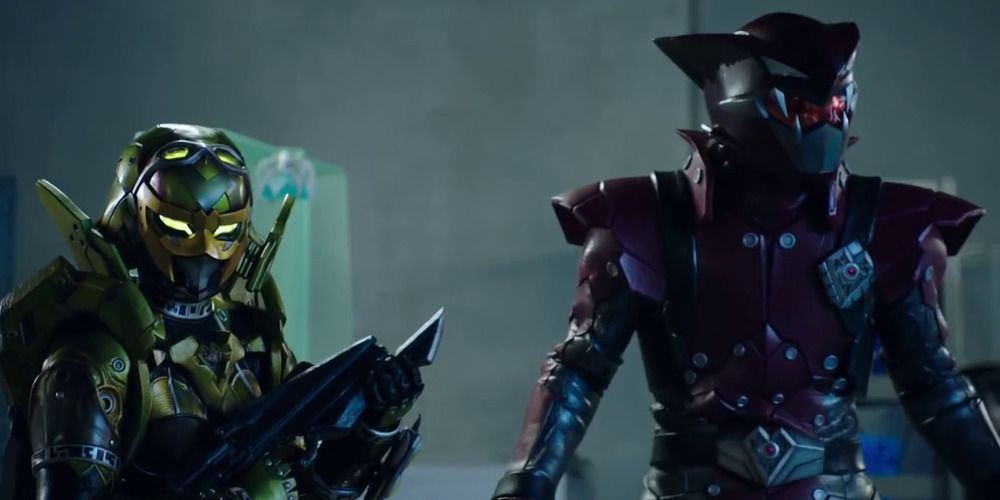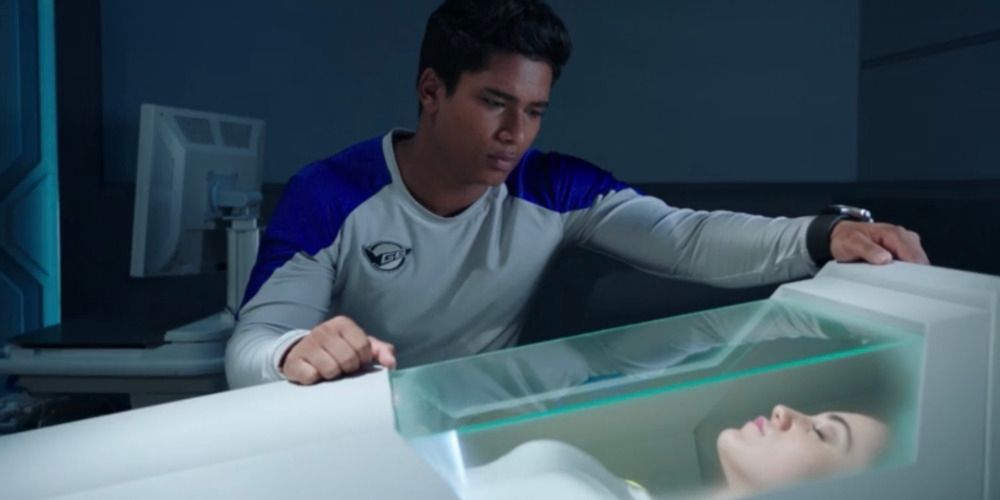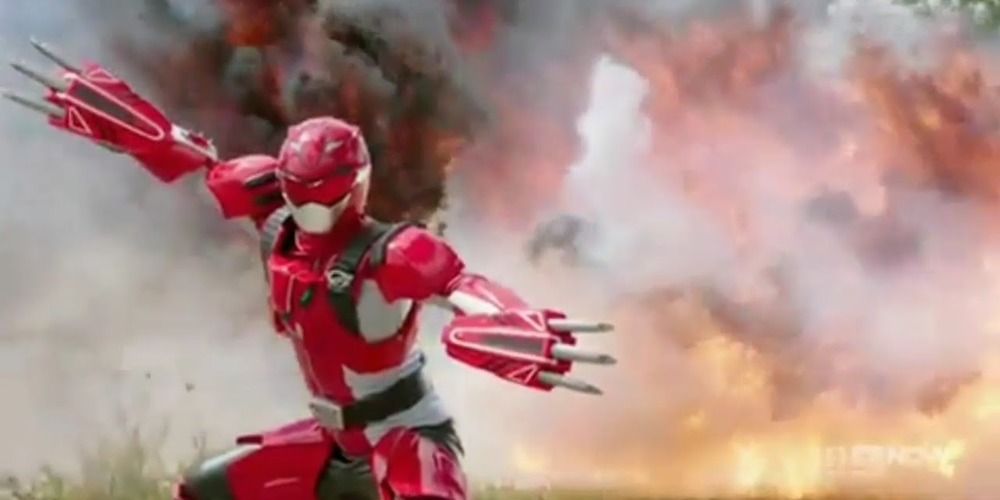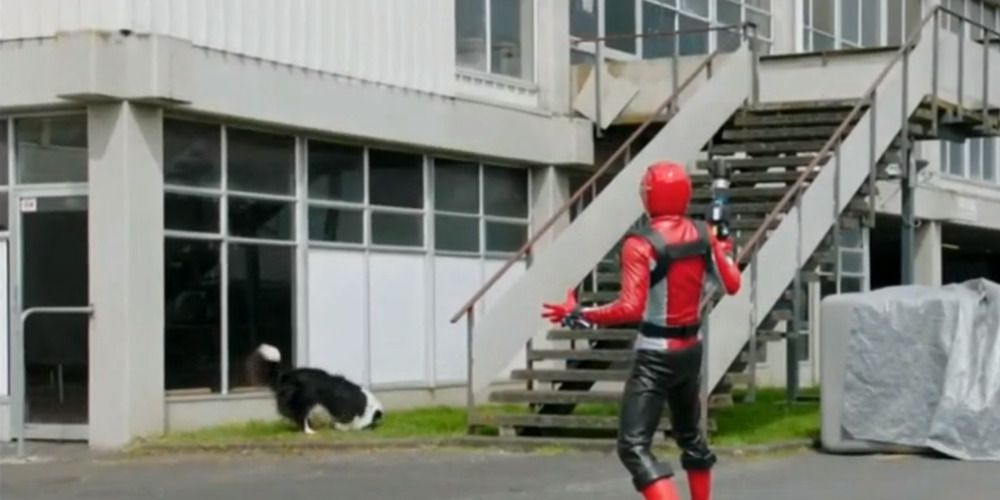It’s no secret that the long-running Power Rangers franchise has its roots in Super Sentai -- a long-running series of live-action Japanese superhero television programs. Once a given Super Sentai series finishes its run, the props and footage are brought west in order to make a new series. Special Ops Squad Go-Busters was already thinking about this cultural exchange when it debuted in 2012. “It’s Morphin’ Time” was literally a phrase spoken aloud -- in English! -- every time the characters powered up, and the giant robots were referred to as Megazords. The opening of the series even pulled code from the English-language Wikipedia entry for Super Sentai to use as graphics!
Notoriously the adaptations of Power Rangers and their original source material can diverge as much as comic book movies do from their page-bound counterparts, but Go-Buster seemed to already have Western audiences in mind. Nearly a decade later, the series has finally made it to our shores as Power Rangers: Beast Morphers. While both series still center on a team of young heroes battling the henchmen of a sentient, megalomaniacal computer virus, it’s their divergences that make the show worth the watch.
10 10. MORPH-X VS. ENETRON
Again, both series start with a similar premise: a metropolis that runs on the futuristic promise of clean energy. Go-Busters’ energy MacGuffin was ‘Enetron’, but Beast Morphers ties their ‘Morph-X’ to the Morphin Grid, canonically known as the source of energy for Rangers past and present.
It’s a choice that upgrades the threat posed to the heroes while also making an opportunity for cameos from previous Rangers. Considering the Power Rangers franchise celebrated its 25th anniversary, they’ve already shown they have quite a pool of talent to pull from for special guest appearances.
9 9. BEAST MORPHER GOLD VS. BEET BUSTER
Speaking of special guests, additional members joining the core team is practically a Super Sentai / Power Ranger tradition. While young actor Abraham Rodriguez plays the scientist Nate Silva and ‘Beast Morpher Gold’, his role in the original show fell to a sentai veteran.
Jin Masato and his alter-ego of ‘Beet Buster’ -- ‘Beet’ as in ‘Beetle’ -- were filled by Hiroya Matsumoto, who previously was the Yellow Magiranger from Mahou Sentai Magiranger (adapted in the West as Power Rangers Mystic Force). Guest appearances are common in Super Sentai as well, with Matsumoto being the seventh to fulfill the role of a team member on more than one season of the series.
8 8. BEAST MORPHER SILVER VS. STAG BUSTER
The insect theme among the new Rangers continues with Steel, the robot ranger -- or Beet J. Stag for Japanese audiences. Whether you know him as Beast Morpher Silver or the Stag Buster, he owes his creation to the Gold Ranger in both versions of the series. It’s the nature of their origin that changes the context, however.
Beet J. Stag was built as Jin’s own ‘Buddyroid’: the Go-Busters equivalent of Beast Morpher’s Beast Bots. Steel’s original purpose was simply as a vessel meant to house Evox, the Big Bad of the show. In contrast, Beet J. Stag was never in the sights of Go-Busters baddie Messiah. To be fair, it’s likely quite an uphill struggle to possess someone that’s already got such a strong sense of self.
7 7. EVOX VS. MESSIAH
Beast Morphers and Go-Busters alike battle the henchmen sent by these evil AI to gather the energy necessary for their escape. So on the topic of Big Bads, how do they stack up against one another from version to version? Like Evox, Messiah was a malicious computer virus that wormed his way into a high-tech facility. In order to stop Messiah from taking over the world, the parents of the core trio of Go-Busters managed to shift the entire facility to another dimension. Trapped with his jailers, Messiah enslaved them for thirteen years to work on returning him to Earth. Once his desires were achieved, Messiah set about the process of absorbing the existences of his hostages so as to create a physical projection that could travel to our world.
All that is prologue to the proper beginning of the series. Sure, Evox wants to destroy all Rangers and project his ruthless form into our world. Messiah has that ambition coupled with the fact that he very nearly succeeded before the Go-Busters even got started!
6 6. NATE SILVA VS. JIN MASATO
Between Go-Busters and Beast Morphers, both golden-suited superheroes are technological geniuses. Despite his prowess as a child prodigy, Nate truly has his hands full as both the mind responsible for most of the Beast Morphers’ technology and as a Ranger himself. Go-Busters, however, never met a tragic backstory that it didn’t want to incorporate. Jin Masato’s is that he was one of the scientists dragged into the other realm with Messiah.
Through the course of the series, it is revealed that his Buddyroid, J, has been acting as a hard-light holoprojector to allow Jin to help the Go-Busters. While he was able to avoid Messiah’s clutches, being in another dimension is causing his physical form to decay. It’s understandable that this heavy concept would bbe reworked for young Western audiences into simply ‘boy genius’.
5 5. SCROZZLE & VARGOYLE VS. …???
Vargoyle has some precedent from Go-Busters -- he was the Danganloid, a one-time monster of the week sent by the Big Bad. Ostensibly someone liked his design enough to keep him around -- it’s happened before with other characters. Scrozzle, on the other hand...well, let’s just get this out of the way.
Scrozzle, the henchman and chief monster-maker for Evox? He straight up does not exist in Go-Busters. Like, at all. What with his craft apron, possibly he’s meant as an homage to Finster -- the original right-hand craftsmonster to Rita Repulsa herself from the days of Mighty Morphin’ Power Rangers.
4 4. BLAZE & ROXY VS. ENTER AND ESCAPE
The original candidates for Beast Morphers’ program were used to create corrupted avatars loyal to Evox. Blaze and Roxy’s opposite numbers in Go-Busters are Enter and Escape (remember: it’s not a Super Sentai series unless there are fantastically terrible puns woven throughout the story).
Enter and Escape are avatars as well -- generated from the data of Messiah’s scientist hostages. Somehow, this has resulted in Enter having a predilection for peppering his speech with French. Was one of the absorbed scientists using the Duolingo app during their work break? Perhaps Evox made avatars from teens to avoid this outcome.
3 3. RAVI & ROXY VS. RYUJI & ESCAPE
The Blue Rangers of Go-Busters and Beast Morphers are each linked to a feminine adversary, but for different reasons. Ravi Shaw and Roxy were to become Rangers, but Evox stole Roxy’s data to make an evil avatar. This resulted in placing the real Roxy in a coma until her doppelganger is defeated.
In the meantime, the cloned “Roxy” takes advantage of Ravi’s feelings for her at every opportunity. Escape shares Enter’s overwhelming need to assert her superiority to humanity by testing herself in combat. Her fixation lands on Blue Buster Ryuji Iwasaki, and provokes him to trigger his berserk strength in the belief that it will make him a worthy opponent.
2 2. FURY MODE VS. POWERED CUSTOM
Powered Custom is the battle upgrade that unites Red Go-Buster Hiromu Sakurada with his Buddyroid, Nick Cheeda. The result is Powered Custom, an upgraded form that comes with new weapons and abilities. For Red Ranger Devon, it looks like the equivalent will be Beast X-Mode (briefly previewed in the trailer for Season 2 of Beast Morphers).
Until then, he’s had a taste of the power he could have via Fury Mode. While strong, Fury Mode’s downside is that it began to turn Devon against his teammates. This in-between step from normal form to Beast-X didn’t appear in Go-Busters, but Red Buster Hiromu had bigger problems than that.
1 1. DOGS VS. CHICKENS
Beast Morpher Red, Devon, fears dogs to the point that he freezes up. This is explained somewhat by the Cheetah DNA infusion he took in order to join the team. Thus, Devon’s reaction is cartoonishly catlike. In the Japanese original, Red Go-Buster Hiromu Sakurada has a much stranger affliction: alektorophobia. In order to save time from needing to pop open a tab to dictionary.com, here’s the layman’s translation -- fear of chickens. Like most issues for the main cast of Go-Busters, it stems from trauma (Hiromu was attacked by a chicken as a youth). Both fears are played for laughs, but it became a stretch to include chickens in situations that might trigger Red Buster. Understandably dogs are a much more common sight in modern life, so the transition for Beast Morphers is a better fit.
Through these interpretations of the original material from Go-Busters, Beast Morphers continues to come into its own: as both its own story and another installment in the Power Rangers legacy. The series currently airs in Japan as well, where those who have a point of reference for its origin can compare and contrast. Here’s hoping that Super Sentai makes similar inroads here in its original form alongside Power Rangers. Differences aside, both shows are well worth watching.

